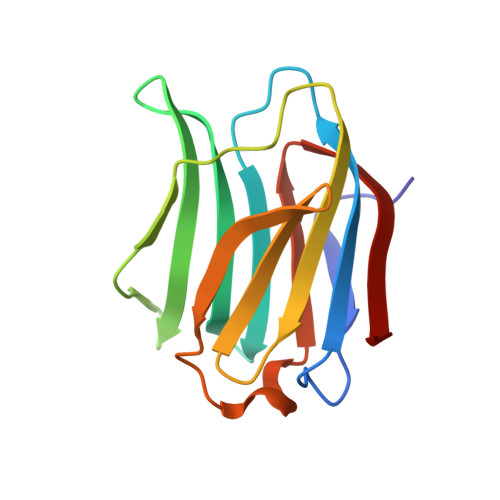Ligand Sulfur Oxidation State Progressively Alters Galectin-3-Ligand Complex Conformations To Induce Affinity-Influencing Hydrogen Bonds.
Mahanti, M., Pal, K.B., Kumar, R., Schulze, M., Leffler, H., Logan, D.T., Nilsson, U.J.(2023) J Med Chem 66: 14716-14723
- PubMed: 37878264
- DOI: https://doi.org/10.1021/acs.jmedchem.3c01223
- Primary Citation of Related Structures:
8PBF, 8PF9, 8PFF - PubMed Abstract:
Galectins play biological roles in immune regulation and tumor progression. Ligands with high affinity for the shallow, hydrophilic galectin-3 ligand binding site rely primarily on a galactose core with appended aryltriazole moieties, making hydrophobic interactions and π-stacking. We designed and synthesized phenyl sulfone, sulfoxide, and sulfide-triazolyl thiogalactoside derivatives to create affinity-enhancing hydrogen bonds, hydrophobic and π-interactions. Crystal structures and thermodynamic analyses revealed that the sulfoxide and sulfone ligands form hydrogen bonds while retaining π-interactions, resulting in improved affinities and unique binding poses. The sulfoxide, bearing one hydrogen bond acceptor, leads to an affinity decrease compared to the sulfide, whereas the corresponding sulfone forms three hydrogen bonds, two directly with Asn and Arg side chains and one water-mediated to an Asp side chain, respectively, which alters the complex structure and increases affinity. These findings highlight that the sulfur oxidation state influences both the interaction thermodynamics and structure.
- Department of Chemistry, Lund University, Box 124, SE-221 00 Lund, Sweden.
Organizational Affiliation:



















